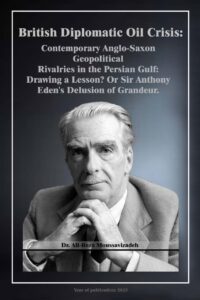The British Imperial Establishment, Post Imperial Era, and the ‘Churchillian’ World View, 1945-2016. (Adjustments & Challenges in Contemporary British Diplomatic Strategy)
70
crown
colony. “Hong Kong immensely wealthy and by far the largest remaining
dependency, has its constitutional
development frozen at a pre-representative
stage by the sensitivity of its huge neighbour,
China.”12 But, following the death
of Chairman Mao, “the new
Chinese leadership appeared to place particular value
on Hong Kong’s role as a window on to the
capitalist world.”13 This has brought
Britain and China to agree in
1985, that the colony will be handed over to China
when the “lease” of the New Territories expires
in 1997. Some of the members of
the Commonwealth also had dependent territories – in particular, Australia
and
New Zealand – but in all such cases the status of dependency was likely to
continue.
Therefore, it could be seen that the map of red, of the British empire
stretching around the world, was
vitually ripped up in less than three decades and
in its place a pink Commonwealth emerged. Overall, the
emergence of the ‘New
Commonwealth’ was a peaceful operation. In most cases the use of armed
forces
and violence was avoided, but there were a number of hitches. In Kenya “the
excessive
practice of the Mau Mau movement led Britain to doubt that political
advances there were moving in the
correct direction; of course, the presence of a
vocal group of white settlers did complicate the issue for
the British government.
In the long run, however, the use of force there was only a temporary
diversion
from the final achievement of a black union.”14 The
communal situation in some
territories was one of the most difficult problems. How to protect
minority
groups, such as the Asians in the three east African colonies, the Chinese in
Malaya, the
Indians in Fiji. “Many of the constitutional arrangements, both
leading up to independence and in the
constitution conferring independence, had
to go through tortuous convolutions to try to protect and please
the different
communities. In both Malaya and Fiji the indigenes were determined to ensure
that they
retained a determining stake in the future of their countries.”15
Pages: 1 2 3 4 5 6 7 8 9 10 11 12 13 14 15 16 17 18 19 20 21 22 23 24 25 26 27 28 29 30 31 32 33 34 35 36 37 38 39 40 41 42 43 44 45 46 47 48 49 50 51 52 53 54 55 56 57 58 59 60 61 62 63 64 65 66 67 68 69 70 71 72 73 74 75 76 77 78 79 80 81 82 83 84 85 86 87 88 89 90 91 92 93 94 95 96 97 98 99 100 101 102 103 104 105 106 107 108 109 110 111 112 113 114 115 116 117 118 119 120 121 122 123 124 125 126 127 128 129 130 131 132 133 134 135 136 137 138 139 140 141 142 143 144 145 146 147 148 149 150 151 152 153 154 155 156 157 158 159 160 161 162 163 164 165 166 167 168 169 170 171 172 173 174 175 176 177 178 179 180 181 182 183 184 185 186 187 188 189 190 191 192 193 194 195 196 197 198 199 200 201 202 203 204 205 206 207 208 209 210 211 212 213

